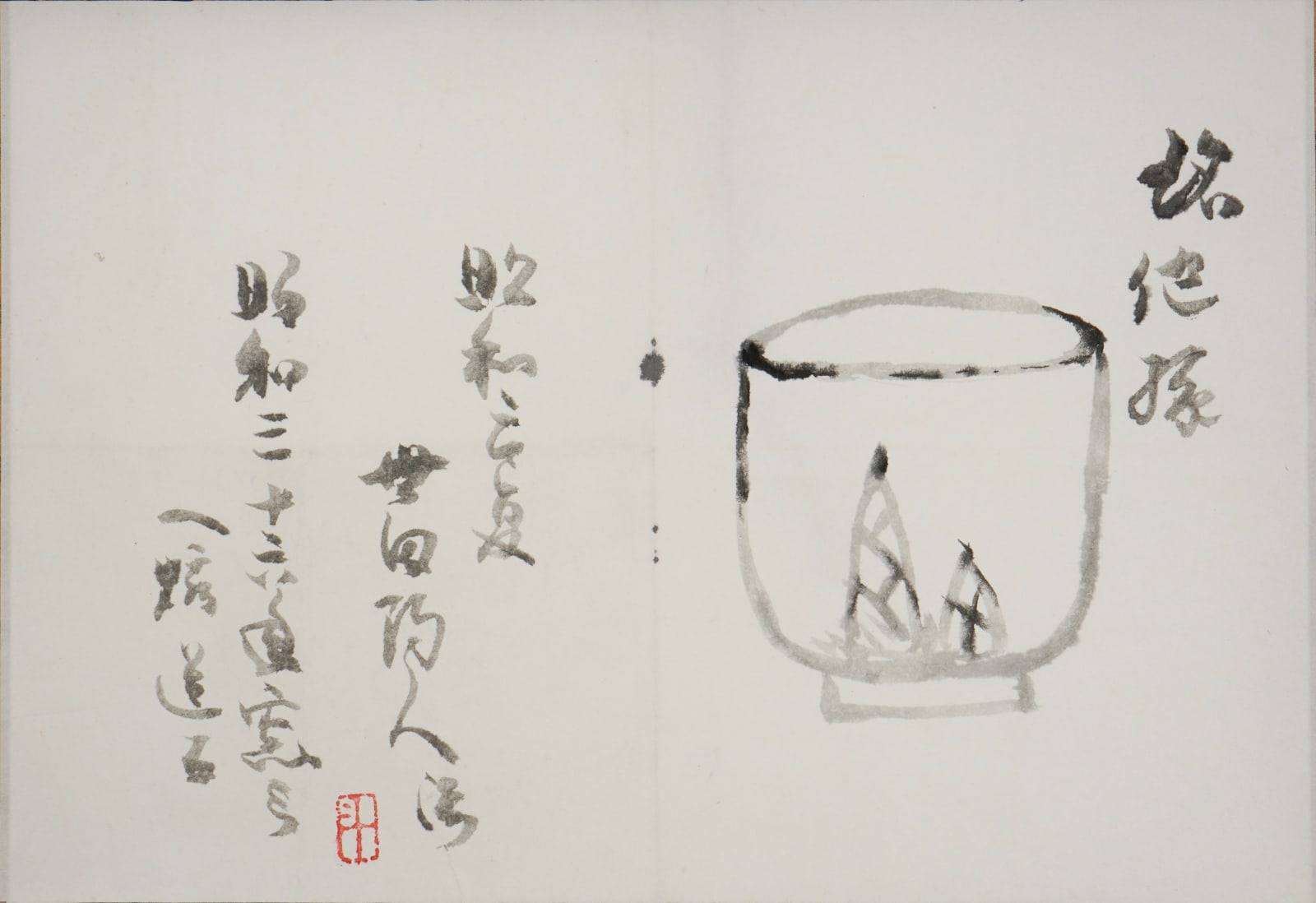Arakawa Toyozo 荒川豊蔵
H11 15/16 × W17 3/8 in.
H30.2 × W43.9 cm
Mount:
H46 × W18 7/16 in.
H116.8 × W47.7 cm
Further images
The following excerpt from the book: "From Obscurity to Masterpiece: The Story Behind Shino Tea bowls with Bamboo Shoot Drawings" describes the development of Zuizen tea bowls (bowls with bamboo shoot drawing):
Toyozō Arakawa, the renowned sixth-generation potter of Kōbe kiln, is celebrated for his remarkable revival of Shino ware, a style that had faded from existence by the 18th century. Among his notable works is the exceptional piece titled "Zui'en 随縁" a shining example of his craftsmanship and dedication. The story of Toyozō’s rediscovery of Shino ware began in 1961 during a visit to Nagoya, where he encountered a red Shino tea bowl known as "Tamagawa玉川." This bowl, along with other artifacts, sparked Toyozō's curiosity and led him to question the prevailing belief that Shino ware was produced only in Seto. Noticing the distinct red clay in the base of the bowl, which was unlike the clay used in Seto, Toyozō suspected a Mino origin.
Driven by this newfound insight, Toyozō traveled to Mino, where he eventually unearthed Shino ware fragments at the Mukudani kiln site. These fragments, which featured the same bamboo shoot design as "Tamagawa," confirmed his theory and marked a significant breakthrough in the study of Japanese ceramics.
Toyozō's discovery not only challenged existing theories but also highlighted his deep commitment to preserving and reviving traditional Japanese pottery. His dedication culminated in the creation of "Zui'en," a tea bowl that reflects both his artistic vision and the historical significance of Shino ware. The name "Zui'en" 随縁 embodies the intricate connections and coincidences that led to the bowl's creation, honoring both Toyozō’s craftsmanship and the rich heritage of Shino ware.





